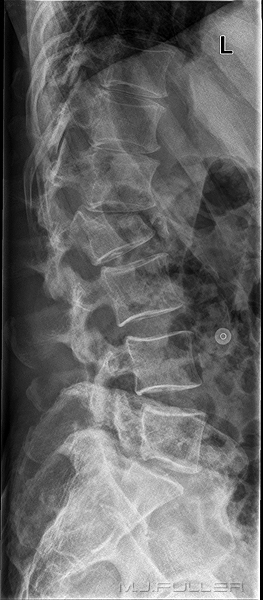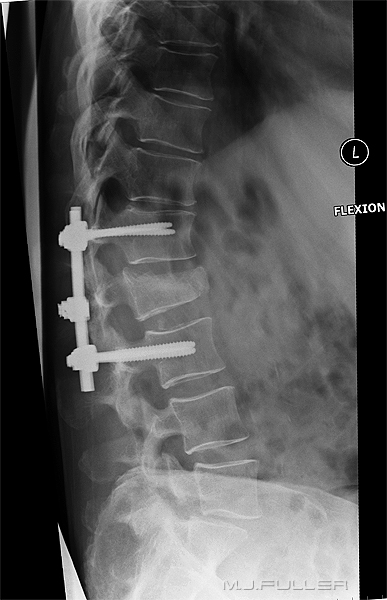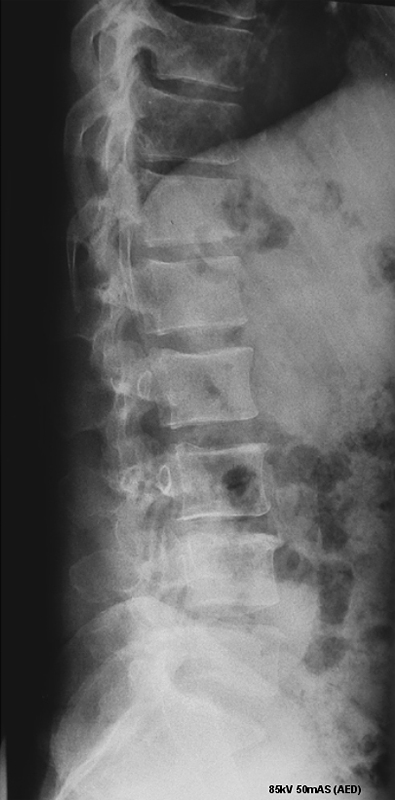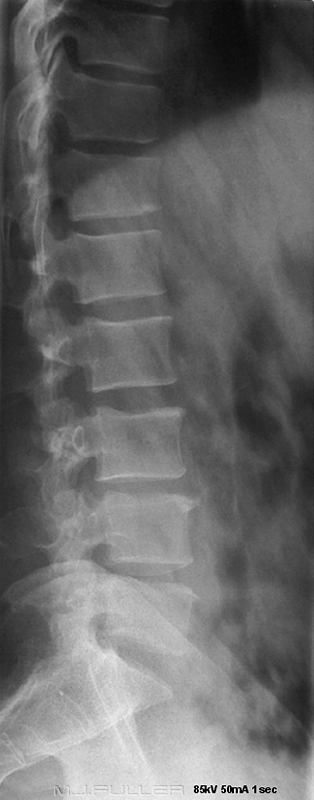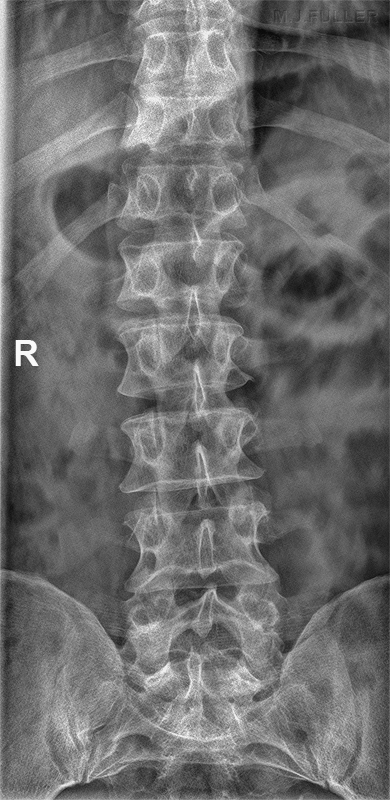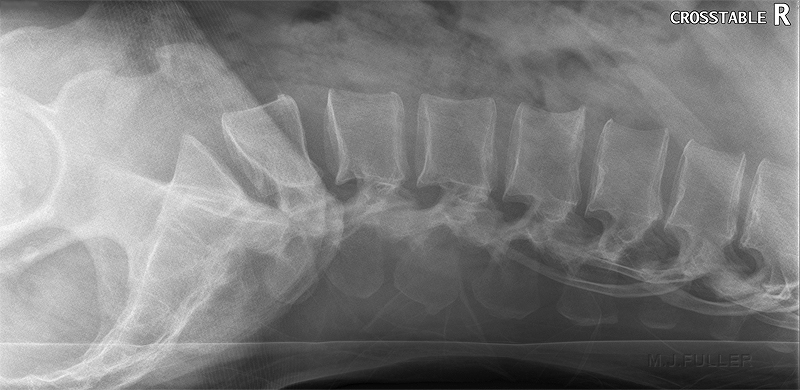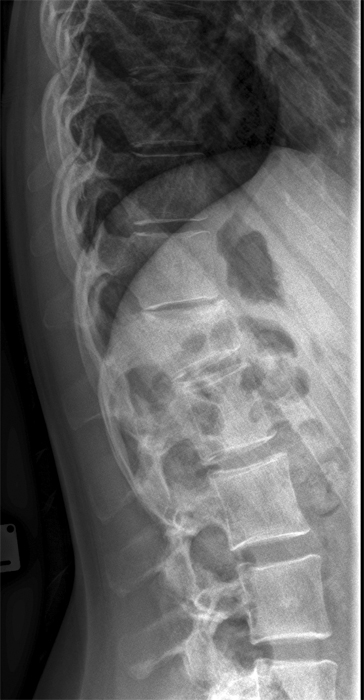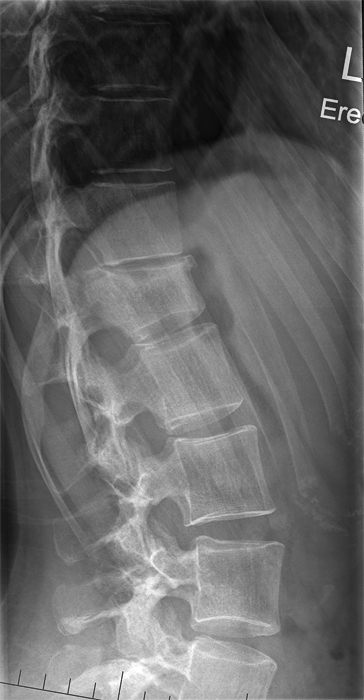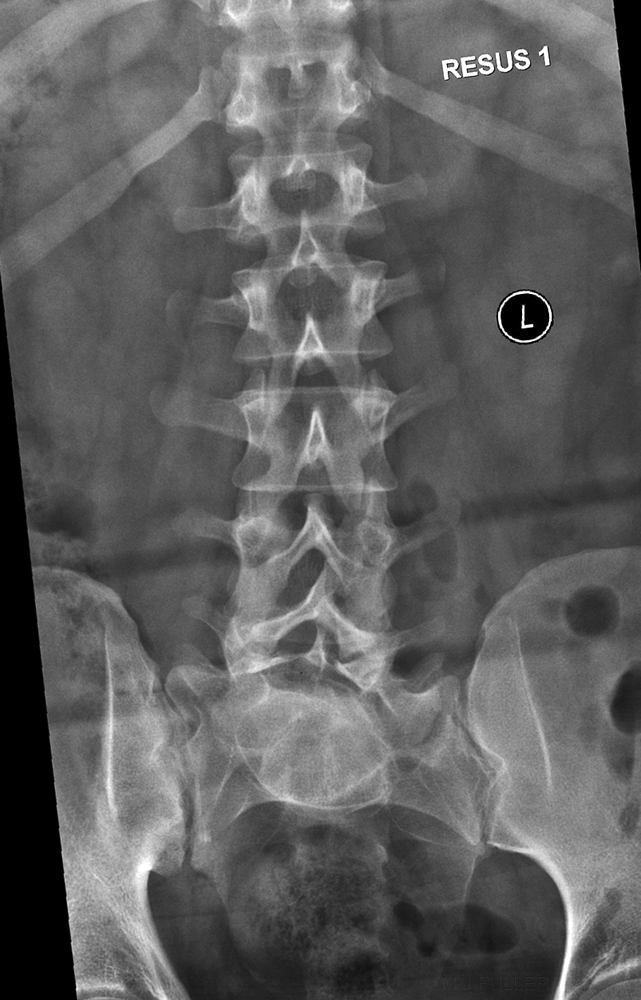Lateral Lumbar Spine Breathing Technique
Jump to navigation
Jump to search
Introduction
Breathing Technique Case Study 1
Breathing Technique Case Study 2
Summary
....back to the applied radiography home page here
Introduction
| There has been a longstanding practice in radiography to perform lateral thoracic spine radiography using a long exposure time to blur out lung and other soft tissue markings. It is unclear why this technique was not seen as equally applicable to the AP projection. Equally, there are patients who present for lumbar spine radiography who have so much small bowel gas that the bony anatomy is almost completely obscured when utilising a short exposure time technique. Why not employ breathing technique for these patients? |
Breathing Technique Case Study 1
| This patient has presented to the Emergency Department following a motor-vehicle accident. The patient was referred for lumbar spine radiography. |
Breathing Technique Case Study 2
| This patient has presented to the Emergency Department with back pain following a fall. The patient has a history of disseminated cancer and was considered to be at risk of a pathological fracture. The patient was referred for lumbar spine radiography with special emphasis on the L3- L5 vertebra. |
Breathing Technique Case Study 3
This patient presented to the Emergency Department with back pain following a 2.5metre fall. The patient was complaining of hip and back pain. The patient was referred for hip and lumbar spine radiography.
Breathing Technique Case Study 4
These two images are follow-up lateral lumbar spine images on a patient who sustained a crush fracture of T12
Breathing Technique Case Study 5
Summary
A breathing exposure technique can be employed for all torso spine radiography. It comes with an increased risk of unwanted movement unsharpness and should be used judiciously after assessing the patient's likelihood of holding still during the exposure. The longer the exposure time, the greater the blurring of the soft tissue structures and the greater the likelihood of movement unsharpness.
....back to the applied radiography home page here
